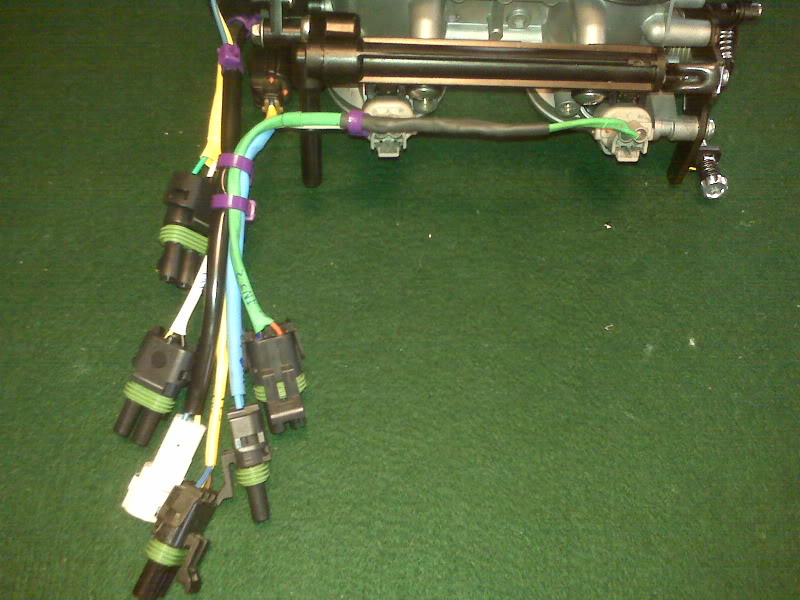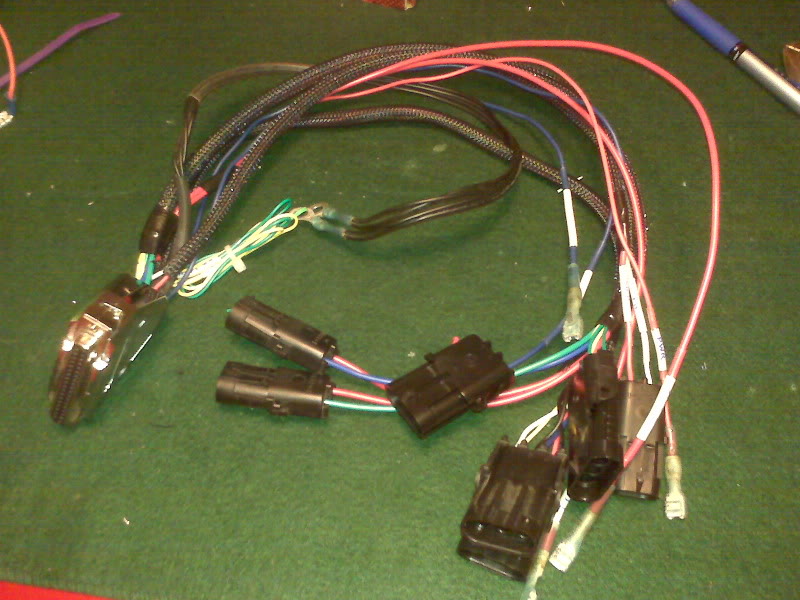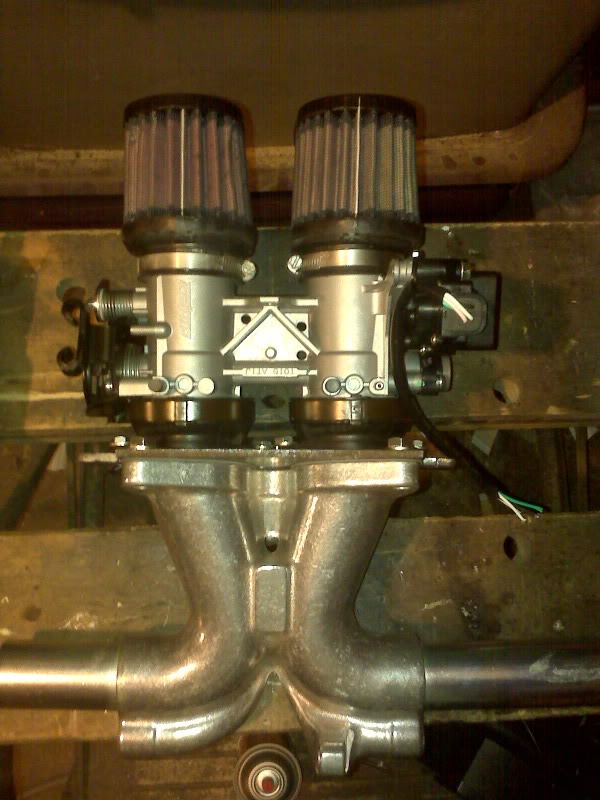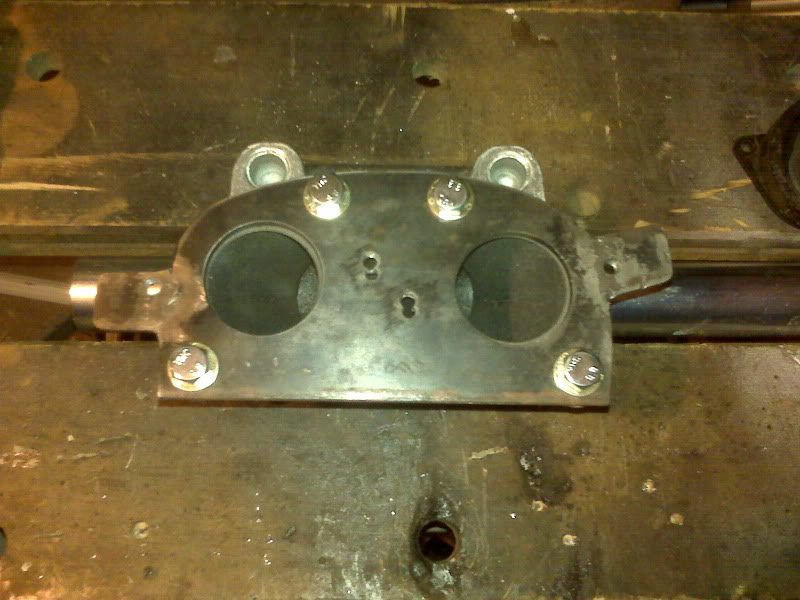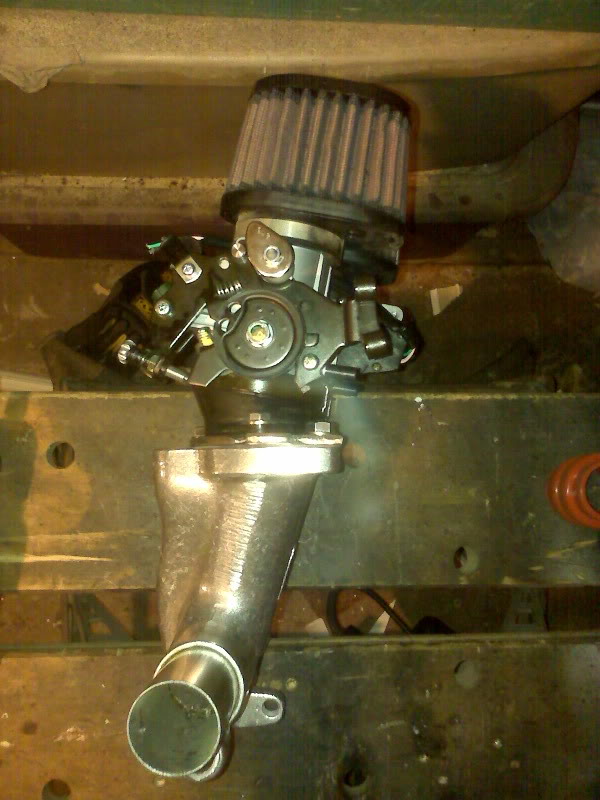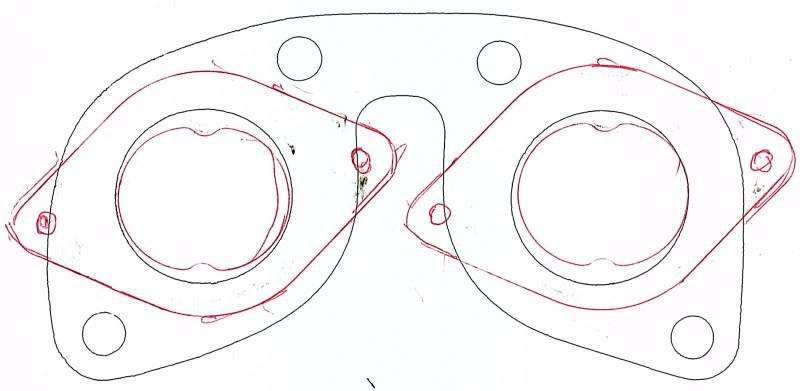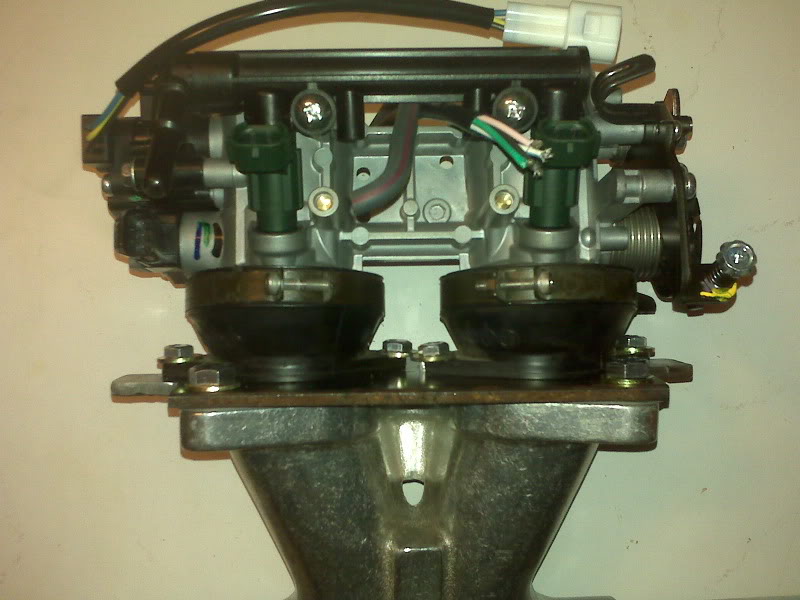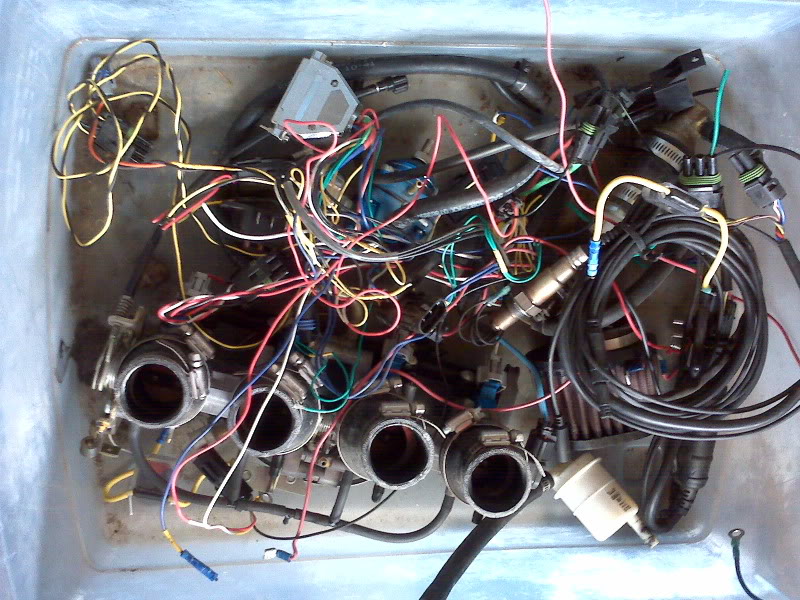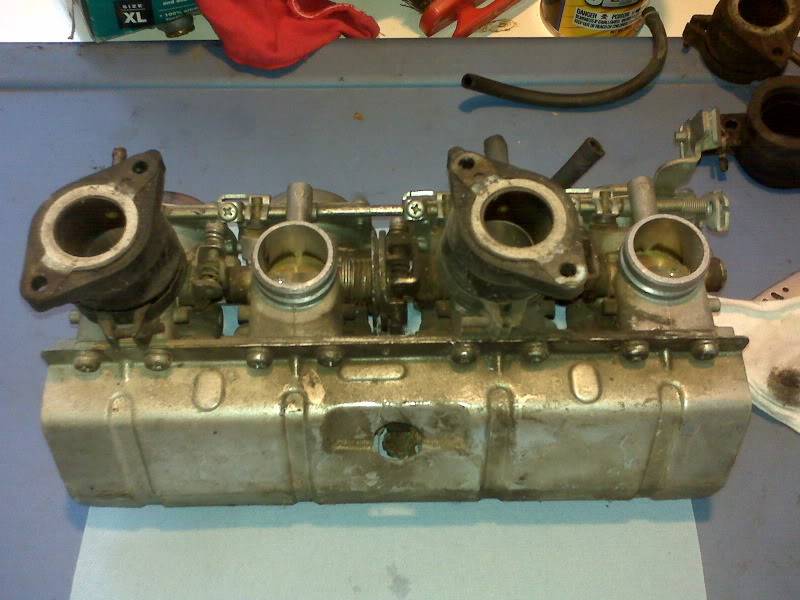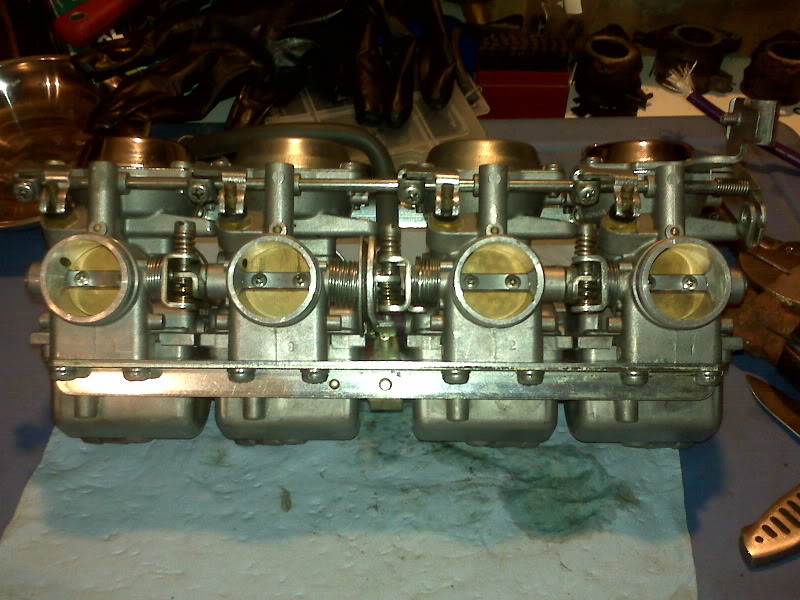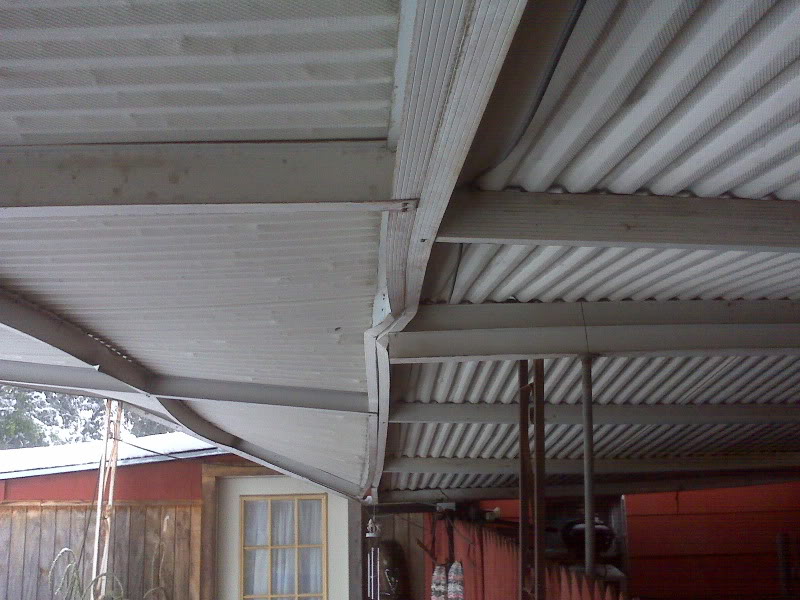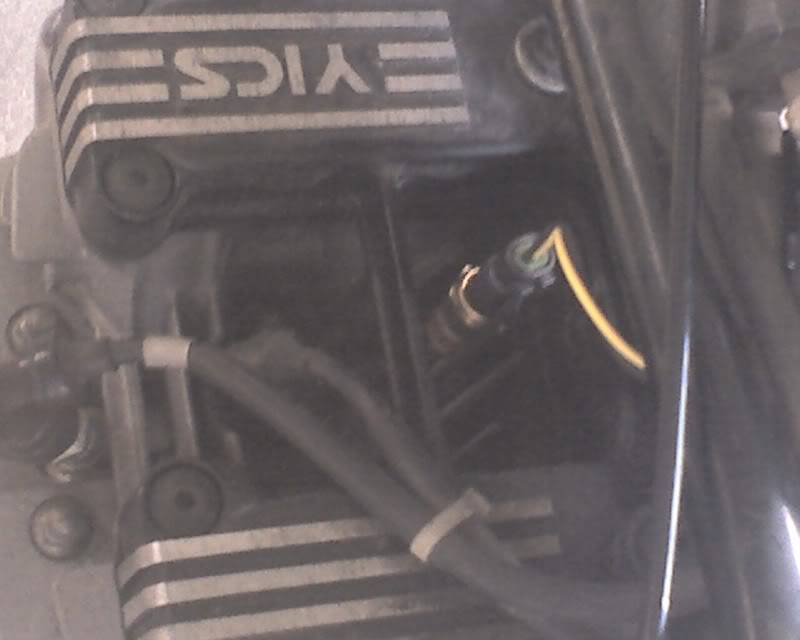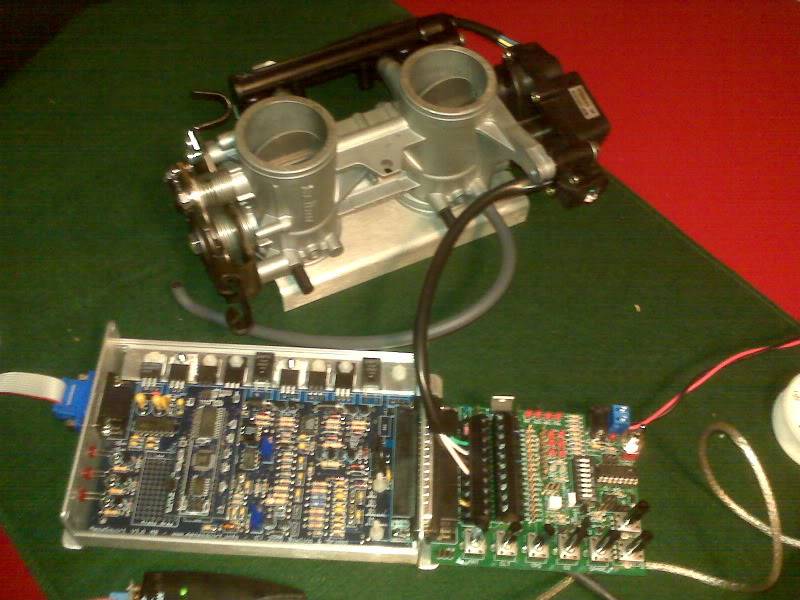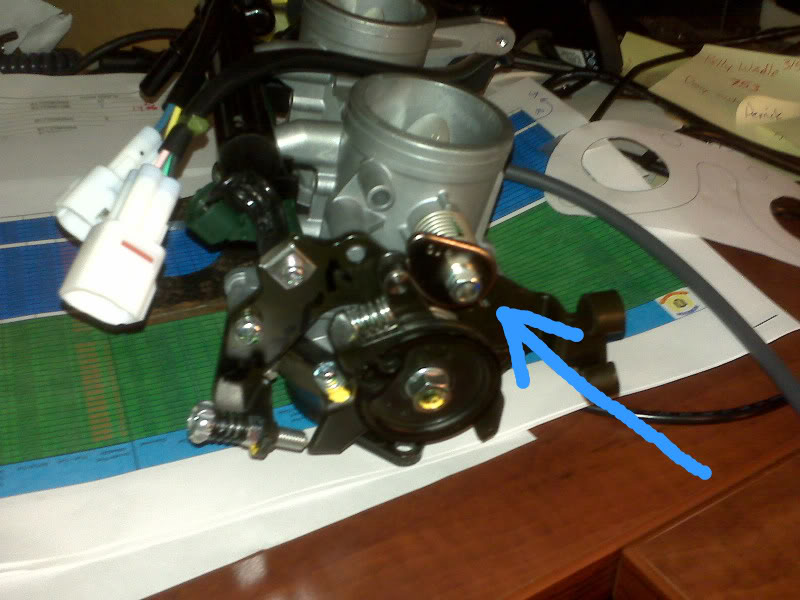It took most of the day, but I wired the throttle body and reconfigured my original MegaSquirt ECU harness.
For the throttle body, I took the shortest two connectors from Buzz’s old harness and remade them, connecting one injector to each output and running separate power leads. When I originally made the old harness, I was not really aware of the needed seals. It doesn’t do much good to have a weatherproof connector without sealing around the wires. So even though the throttle position sensor (TPS) cable was a suitable length, I needed to cut the pins off anyway, so I rewrapped it in yellow heatshrink while I was at it. Astute observers will see an extra cable in the bundle, the one with the white connector. This is the currently unused factory subthrottle position sensor. It costs nothing to leave it there, just in case someone someday writes subthrottle support into MegaSquirt ![]()
On Buzz’s harness, the intake air temp (IAT) wiring was sort of an afterthought, so while the sensor was on the throttle body, it was connected through the frame harness. This time, it’s right there with the other throttle body connectors. Also, the old IAT and coolant temperature (CLT) were wired to the ECU in a 3 pin connector that shared grounds because those sensors both came in from the frame harness. In this case, one is on the TB harness and the other will be on the engine harness, so they will each have a two pin connector.
New to this lineup is the wiring for the idle air control (IAC) stepper motor. This was one of the modifications needed inside the shell, adding four wires. The pins are essentially randomly connected to the motor itself. Unless I was just EXTREMELY lucky, I will need to rearrange the pins before I can expect the motor to work.
While I had the DB37 shell open, I also made the injector leads into single 14ga wires instead of doubled 18ga.
As for the harness, it’s mostly like it was, except nicer. Some groups of wires are bundled together with expandable sleeving and all connectors have been remade with seals. Finally, connectors were added for the options applicable to this job that weren’t on Buzz, like the EDIS ignition system and a permanently connected wideband exhaust oxygen sensor.
In the old system, the wire labeling was very clear until the wires were handled. Wherever possible, I have relabeled the wires using white heatshrink tubing, written on with fine point Sharpie then covered with clear heatshrink. As I re-redo a couple of the connectors, I will relabel the lines I missed.
